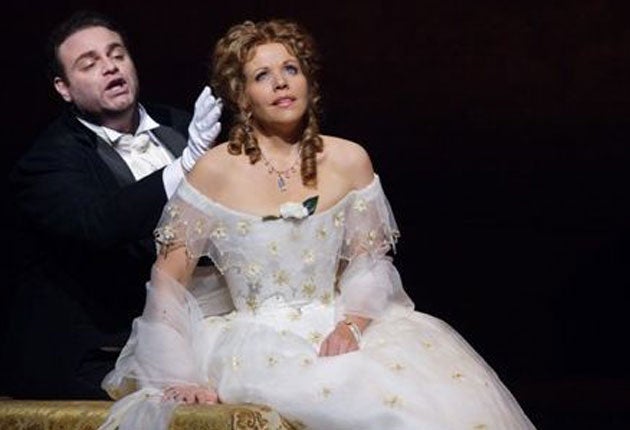Everyone can have a night at Covent Garden
The Royal Opera House has begun embracing social networking to widen its audience, says chief executive Tony Hall

I believe world-class opera and ballet should be available to everyone. The rapid development of digital technology in recent years now makes this dream a reality. A couple of years ago we beamed La Traviata with Renée Fleming live to 15 giant screens and nearly 200 cinemas across the UK. We had 10,000 people in Trafalgar Square alone, another 30,000 at other screens and 60,000 in cinemas giving us a combined audience of 100,000. And at our live screening of Madama Butterfly last week, demand was so great that we had to turn people away from Trafalgar Square. This is what it's all about.
In February we premiered our brand new ballet, Alice's Adventures in Wonderland. This was a major event for us and we wanted to make sure as many people as possible were able to experience it. So, the ballet was broadcast on BBC2 over Easter, preceded by a behind-the-scenes documentary. But we wanted to do more, to create a buzz around the broadcast similar to that around the stage performance. So, using social media, we organised a live tweet-along so that viewers at home could share their thoughts on the piece. The response was fantastic with comments ranging from "Lauren Cuthbertson is divine" to "In love with Ed Watson's white rabbit. And no, that's not a metaphor"! We are also going to release the recording on DVD in the autumn and hopefully in cinemas – maybe even in 3D. We don't know yet exactly how many people we will reach through all of this, but we can be certain the numbers will far surpass the sold out run in Covent Garden.
And it's not just distribution that's different in the digital age. The artistic team for Alice used a whole range of visual effects to help recreate Lewis Carroll's world. Natasha Katz was the lighting designer – one of the best in the world – and it was fascinating to see her work with the latest equipment, creating the magic. This fusion of classical ballet and cutting-edge digital projections wouldn't have been possible 20 years ago.
The way we market and sell our tickets has also changed dramatically. Up to 80 per cent of our tickets are bought online on the first day of booking and social media platforms like Facebook, Twitter, blogs and YouTube allow us to communicate what we're doing in new ways. For the Gala opening of Alice we brought in the Ballet Bag bloggers to record every detail of the night – from the dressing rooms to the post-performance dinner. They posted messages throughout the evening on the ROH twitter feed. This was a risk as we were handing over editorial control, but we wanted the voice to be authentic and it worked.
The next stage is the convergence of broadcast and the web. We will all become broadcasters and everything will be available on demand – where you want it when you want it. People will be able to watch any performance from around the world live from their living room, or search through the archives for a particular show. People have a right to expect this – a quarter of our budget comes from the public purse – for every £3 we spend, £1 comes from the public. People are paying for us and it is even more important, then, that we reach as many people as we can.
Up until now, many people haven't been able to access the best ballet and dance because they couldn't afford tickets or couldn't get to London to see things. Technology changes all of this because it enables us to take our work beyond the stage and the theatre and into people's homes and local cinemas. It takes the risk out of it and, crucially, much of it is available free or for a small cost.
As well as being able to access content when and where they want it, our audiences will also be able to get performance histories, biographies and to log their experience and give instant feedback – like virtual applause or boos. These increased levels of feedback and input from audiences are having a profound effect on all of us. Arts organisations are becoming more permeable and responsive and our audiences ever closer to us.
All of this has the potential to create a more diverse, expressive and responsive cultural sector – our challenge is to embrace the opportunity.
Join our commenting forum
Join thought-provoking conversations, follow other Independent readers and see their replies
Comments